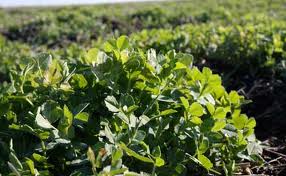The Austrian winter pea is the little wonder of Austria that has now spread to many other regions of the world. Find out about the origins and characteristics of the pea plant that has gained credibility all over the world.
An amazing aspect of civilization is that sometimes the smallest of things can bring a nation fame and recognition in the eyes of the world. When it comes to the country of Austria this aspect can be clearly understood when we observe the Austrian winter pea phenomenon. Although a small commodity it carries the name of its country wherever it goes and hence becomes an identity forming item of Austria. So what exactly is the Austrian winter pea? You may have seen it or heard of it by other names such as the black pea and the field pea. It is actually a cool season annual legume found in the region. The distinctive quality of the Austrian winter pea is the fact that it has very good nitrogen fixing capabilities.
Origins of the Austrian Winter Pea
Tracing down the origins of this legume and other related beans we find eastern Mediterranean and Western Asia to be the regions that gave birth to them. The Austrian winter pea was introduced into the United States quite some time ago and has established it self as a winter season legume grown in various regions of the country. From the southeastern states to the far north and west such as Oklahoma and coastal regions like Oregon and Washington all are home to the Austrian winter pea. Hence we find that the Austrian winter pea has adapted it self in to the various regions through out the United States.
Characteristics of the Austrian Winter Pea
The Austrian winter pea grows low close to the surface of the ground. The legume grows in the form of vines which spread over the earth. The amazing thing about the legume is its nitrogen fixing abilities. In good soil conditions the Austrian winter pea has been recorded to fix over 200 pounds of nitrogen in per acre each year. The stems from the plant stretch out about two to four feet and are hollow yet slender and succulent. The color of the plant foliage is pale green and tiny purple and pink flowers blossom along the vines. The leaf on the plant is quite unique as it contains up to three pairs of leaflets and terminal branched tendrils. The pods on the plant are known to have up to five round dark colored seeds and measures around 2 to 2.5 inches. The seeds of the Austrian winter pea plant are relatively large and can weigh up to 50 to 60 pounds per bushel. They are commonly found in gray color studded with gray and brown mottles.
Amongst the other things that make the Austrian winter pea unique are its versatile adaptation capabilities. But naturally the pea has excellent winter hardiness and can easily adapt to the intermountain region valleys and other regions in the United States. Although the pea plants are known to have the ability to survive and blossom in cold winters there have been certain incidents where prolonged exposure to sub zero temperature has destroyed the crops. The planting and harvesting of the pea plants requires careful planning so as to get the best results.





